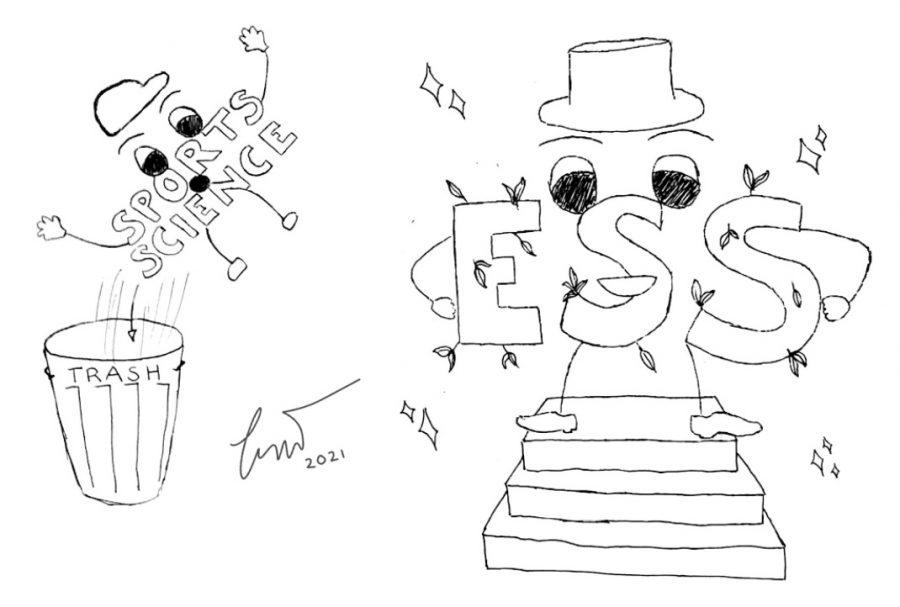Subject to Change
In only five months, the class of 2023 will enter the Diploma Program. Tension rises in Year 11 as the pressure is on to make our subject choices. This year, however, is particularly interesting; a new course has been added to the curriculum. Environmental Systems and Societies (ESS) is the only course to be offered at ISL that is identified as both a science and a humanities. This creates many opportunities for the student body. However, it also prompts a question: If ESS can be added so easily, why can’t all other interesting subjects such as psychology or business also be a part of ISL’s curriculum?
It’s pretty simple, actually. If a student or member of staff takes interest in adding a new course to the curriculum, they can speak to Mr. Humphrey – the IB diploma coordinator. ISL is not a very large school, so courses can be limited at times. The initial steps of instating a new course would include: researching the advantages and disadvantages, looking at flexibility in the schedule, finding qualified staff, and seeing if the subject is too similar to another existing course.
“We have investigated before whether or not to run psychology,” Mr. Humphrey says. “My understanding was that in order to fit psychology into the curriculum, we would need to reduce other humanities elsewhere.”
The problem with this is that staffing would be a conflict of interest. There are many teachers at ISL that teach history, geography, or economics. However, having one specialist teacher in psychology would leave the department with a slight vulnerability. If that teacher was to be absent, nobody else would be qualified to teach the course as a substitute. Having another humanities subject was not possible, as psychology would pose a threat to other subjects. The same goes for business and economics. They would be attracting the same students, which would potentially cause a “rivalry” between the two. The two subjects would be competing, as they would be attracting the same students, which is a problem.
However, when ESS was brought to Mr. Humphrey’s attention, he found that the flexibility aspect was particularly exciting, and there was no threat to other subjects.
“It provides an accessibility to a natural science or a humanities subject, or both,” he shared.
What is ESS, really? Mr. Friend, a member of the individuals and societies department, defines it as “a course that examines the interactions between humans and the environment.” The intriguing aspect of the subject is that it takes a systems approach, unlike the traditional reductionist approach.
“Normally in our academic courses, we look at complex things, break them down into smaller parts, and then try to understand those smaller parts,” Mr. Friend explains. A systems approach, on the other hand, looks at the way things fit together in the bigger picture.
“It’s not a hippie, polar bear cuddling, go and save the whales kind of focus. It’s more about how we can build our lives as humans so that our great-grandkids can enjoy the same things we are,” Mr. Friend says.
Perhaps one of the best things about having ESS in the curriculum is that students can take it as both their science subject and their humanities subject, allowing them to take more languages or even two arts. However, this sparked the debate on whether or not sports science should run if – it could in the first place. The question was, could ESS and sports science both run side by side?
The two technically do appeal to different interests, so initial thoughts were to try and offer them both. The sports science course has been successful in the past, but it is not running for the current Year 12’s, and it will not be running next year. At first, there were many students who showed interest in taking the course. However, after realizing that it would clash with the other subjects they wanted to take, only two students remained. It really is a play as to which six subjects are the most important to you and your future. Sports science, however, just can’t seem to make the cut.
ESS, on the other hand, seems to have many interested students, replacing sports science without any difficulty. Ms. Smiley, a physics teacher, describes the course with enthusiasm, saying “Environmental science is what science is like in the real world.” Our mission statement includes the idea of producing students who will go on to have a positive impact on the world – and that’s essentially what the course is about. It fits into what we are trying to be as a school. Though sports science will be missed, ESS seems to be a promising course that takes a new interdisciplinary approach. Will it be successful? Only time will tell.

Hi! My name is Ayana and I am 18 years old. I enjoy writing opinion articles and I also manage The High's social media @thehighisl - follow us on Instagram...

I’m a 16 year old student in ISL. I've been in ISL for 8 years. I work on the illustrations for articles (specifically the horoscopes column) and a podcast,...


